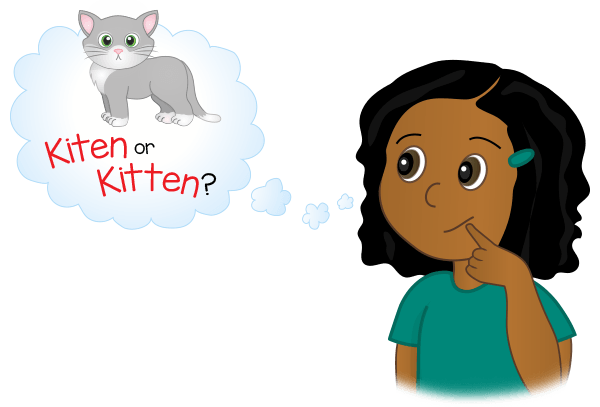by Marie Rippel
Closed and open syllables are the first two syllable types students should learn. Out of the six syllable types, these two are the easiest for students to master.
What Is a Closed Syllable?
In its simplest form, a closed syllable is a vowel followed by a consonant. Examples include cap, sit, and up.在最简单的形式中,闭音节是一个元音,后面跟着一个辅音。例子包括cap、sit和up。

It’s called a closed syllable because the vowel is “closed in” by a consonant. In closed syllables, the vowel usually says its short sound. 因为元音被辅音 “封闭 “了,所以叫闭音节。在闭音节中,元音通常念它的短音。
More than one consonant can be used to close in a syllable, as in dish and stretch. And many multi-syllable words contain closed syllables, as in insect, rabbit, and napkin.一个音节中可以用一个以上的辅音来闭合,如dish和 stretch。而许多多音节词中都含有闭音节,如insect、rabbit和napkin。
What Is an Open Syllable?
An open syllable has a vowel at the end of the syllable. Nothing comes after the vowel, as in no, my, and we.一个开音节的末尾有一个元音字母。该元音字母后面没有任何东西,如no、my和we。

It’s called an open syllable because the vowel is “open”—that is, nothing comes after it except open space. In open syllables, the vowel says its long sound.之所以叫开放音节,是因为元音是 “开放的”–也就是说,除了开放的空间,后面什么都没有。在开放音节中,元音说的是它的长音。
There aren’t many one-syllable words that contain open syllables, but there are many multi-syllable words that do. For example, look at the first syllables in these words:含开音节的单音节词不多,但含开音节的多音节词很多。例如,看看这些词的第一个音节。
ba by
e ven
pa per
mu sic
Why Is Knowing the Syllable Types So Beneficial?为什么了解音节类型这么有好处?
Knowledge of syllable types is an important decoding tool for both reading and spelling.对音节类型的了解是阅读和拼写的重要解码工具。
Let’s say a student is reading a story and she comes across the word craft. She doesn’t instantly recognize the word because she has never read it before. Although the word is unfamiliar, she isn’t flustered because she has a method for determining whether the letter A says its long or short sound. She sees that the A is followed by a consonant, which means that it is in a closed syllable, so the vowel most likely says its short sound. She is able to decode the word craft independently and continues reading the story.比方说,一个学生在阅读一个故事时,她遇到了 “工艺 “这个词。她没有立即认出这个词,因为她以前从未读过这个词。虽然这个单词不熟悉,但她并不慌张,因为她有一个判断字母A说的是长音还是短音的方法。她看到A后面是辅音,这意味着它是在一个封闭的音节中,所以元音很可能说它的短音。她能够独立解码单词craft,并继续阅读故事。
Syllable type knowledge helps with spelling, too. In the scenario below, the child wants to spell the word kitten. But she hasn’t reached the stage of automaticity yet, so she can’t remember whether there is one T or two in the middle of the word.音节类型知识对拼读也有帮助。在下面的情境中,孩子想拼读单词kitten。但她还没有达到自动发音的阶段,所以她记不住单词中间是一个T还是两个T。

A child who doesn’t have a visual picture of the word and doesn’t know about syllable types might just write the word as kiten. After all, we pronounce it “ki(t) ten,” without enunciating the first T.一个孩子如果没有这个词的视觉形象,不知道音节类型,可能就会把这个词写成kiten。毕竟,我们的发音是 “ki(t) ten”,而不发第一个T。
But our student can draw upon her knowledge of open and closed syllable types and easily come up with the correct spelling.但是我们的学生可以利用她的开音节类型和闭音节类型的知识,很容易得出正确的拼写。

Our student realizes that if she leaves the first vowel open, it will say its long sound, resulting in /kī-těn/. 我们的学生意识到,如果她把第一个元音打开,它就会说它的长音,结果是/kī-těn/。
Teaching Open and Closed Syllables教开闭音节
In the All About Reading and All About Spelling programs, we use the letter tiles app (or the physical letter tiles) to demonstrate the differences between open and closed syllables (and all syllable types!). Syllable tags are placed above words, making this a concrete activity. An open door represents an open syllable, and a closed door represents a closed syllable. 在All About Reading和All About Spelling项目中,我们使用字母方块应用程序(或实体字母方块)来演示开放和封闭音节之间的差异(以及所有音节类型!)。音节标签被放置在单词上方,使之成为一个具体的活动。打开的门代表打开的音节,关闭的门代表关闭的音节。
